#review
Video
youtube
Daisy Chainsaw by Charlotte Laskowski is a grid based tactical TTRPG about magical girls saving the world with the power of love and ultra violence.
80 notes
·
View notes
Text
Some thoughts on Transformers One
- I love the development of Orion/Optimus and D16/Megatron (even though the latter turns evil)

- Bumblebee is pretty much Donkey from Shrek!

- Is it wrong if I think that Sentinel Prime is an improved version of King Magnifico from Wish?

- Steve Buscemi as Starscream totally works! I mean, much like Randall, Starscream is kind of a snake himself
#transformers#transformers one#thoughts#review#optimus prime#megatron#bumblebee#starscream#sentinel prime#disney wish#shrek#monsters inc#donkey#shrek donkey#randall boggs#king magnifico
85 notes
·
View notes
Text
We are all pebbles on the side of the road
A "One Piece Fan Letter" personal review.
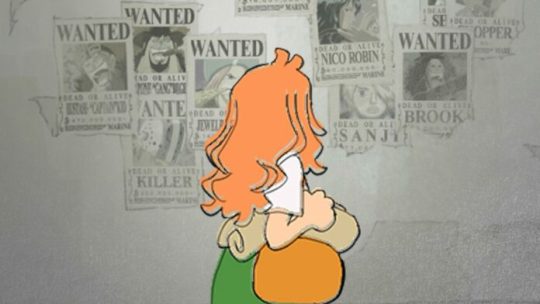
Have you ever thought, while watching or reading One Piece, "Wow, there are so many Marines. So many!" Like during the battle of Marineford in the war for supremacy. Or, in the more recent saga of Wa no Kuni, as I read the chapters, I always thought, "But how many subordinates does Kaido have exactly? Hundreds... thousands?" Moreover, what struck me most was how these crowds were nothing more than that: crowds. A bunch of characters or people thrown in quite carelessly, as if to make up the numbers, or as props. They could be like a forest or a city skyline. Often reduced to mere extras for some tacky gag or a punching bag for the enemy of the moment who occasionally made a hundred of them fly into the air with the flick of a finger. To be clear, I am not referring to marginal characters who actually have a role in the story, or subjects of kingdoms under the rule of an evil monarch. I refer to those extras drawn in the space of a single panel, on a single page, without name or role. You may have noticed them. No? I'm not surprised. The truth is that habituation has taken its course and over time these extras have practically become invisible. Sometimes in my mind they were just phrases, no longer even people. Like:
"The Straw Hats!! They are the Straw Hats!!" "There they are, get them!" "GYAAAAAAA!" "RUN!" And so on. My feeling was that these bunch of people were essentially dehumanized in our eyes. You have certainly seen hundreds of Marines, pirates and maybe civilians, perhaps injured or terrified in the world of One Piece, but unless the scene focused on one of them, essentially (as far as I am concerned, of course) I didn't even see them. Not anymore. They were there to show how strong this or that character was, or to make up the numbers.

It is not a bad thing, indeed. They can be a means of communication to the reader, so useful, but... well, quite boring. I realized that the special episode of One Piece "Fan Letter" would please me very much already after the first minute of playback. After the usual introduction we all know: "Wealth, fame, power..." etc. etc. the narrator's voice suddenly added this phrase to the usual spiel:
"Even in such times, the majority of people do not aspire to be pirates and do not pursue the One Piece. Just like them..."
I won't spoil it, but the episode showed something we didn't know we needed in One Piece: the human side of ordinary people. Of those extras, of those phrases that we sometimes don't even read or hear. Of how wars, clashes, involve people in a devastating and horrible way. In this episode (told from the perspective of ordinary people, not under the dominion of usurpers or pirates with delusions of grandeur) men and women like the Straw Hats, like the members of the Seven Warlords or like the Marine top brass, appear for what we sometimes forget they are: beings with strength and power akin to creatures not belonging to this world.

We enter the everyday lives of those who are not writing history, but see it unfold and come to pass before their eyes, involved in it willingly or unwillingly, for better or worse. Where the Straw Hats, if you are lucky, you can only catch a glimpse of them as they sail away forever. Of whom you only know the name, of these pirates so far away that sometimes you wonder if they actually exist.

And I really realized how much we needed this perspective, after so much time seeing it through the eyes of the hero. To discover once again how these characters appeared to our eyes, with superhuman powers, questionable combat techniques (do you really need three swords?) and the admiration and inspiration they brought us. Of how, even though of the Marines or mere civilians, the story of these pebbles is there, present, breathing and fighting, even at the margins. Not just words on a page. But heart and blood and fear and love. And joy... and pain. For some, the Straw Hats are just strangers glimpsed on a newspaper page, among the streets of a city or petty thieves making trouble on the other side of the world. And I don't know about you, but I find this absolutely fascinating. It's like watching someone experience One Piece for the first time. We were all there once, we just forgot.

It might seem disheartening to feel 'small,' to sense that your life doesn't make a difference, being that pebble on the side of the road. But the truth is, it is on this road that the 'great ones' pass, and we pebbles make them legends as they leave it forever. It's their story, our story. The story of everyone.
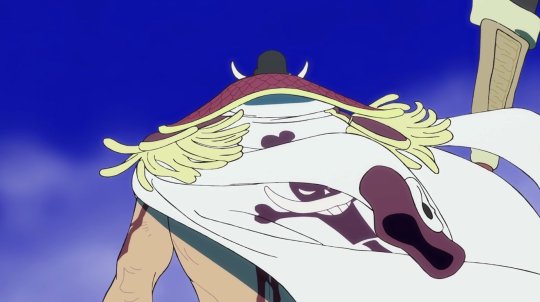
And that gives life and meaning to adventures.
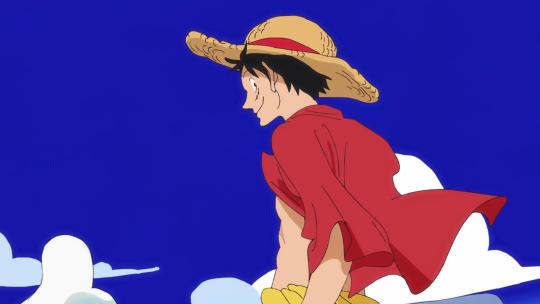
#one piece#one piece fan letter#review#monkey d. luffy#roronoa zoro#nami#usopp#sanji#tony tony chopper#chopper#robin#nico robin#franky#brook#jinbei
55 notes
·
View notes
Text

OK, so today I'm reviewing-
HEy! This isn't who I asked up today! This doesn't even look like a Little Guy! This is... Nothing, it's just a symbol! An icon! It doesn't perform actions. You can't wrangle it!! Something must be wrong on my end. No review today, sorry! Going into maintenance! I'll figure out what's wrong by tomorrow, promise!
48 notes
·
View notes
Text
So I was hearing people talk about The Edge of Sleep and decided to give the show a chance. I think it was an interesting premise that struggled ultimately with the lack of time for fleshing out the characters. Could have done with more flash backs and not just for Dave but for Linda, Matteo and Katie. Markiplier was a bit stiff in the acting but definitely got better as the show progressed. I will say, he definitely wasn’t given much to work with as Dave was the least interesting character besides the mystery surrounding his dreams.
The story premise was interesting and the editing did a good job keeping you interested in show. The full story though was lacking and the ending was for me disappointing. I think going full on Eldritch horror and having the ending be more confusing would have worked better. I wanted the ending to leave me guessing.
The characters that weren’t Dave struggled with how little their own backstory was fleshed out. Linda should really have been a doctor and not a nurse I felt their explanation was rather ridiculous for why. Katie was just there because she was Dave’s ex and her telling Dave he had to face his darkness was honestly kind of funny in the situation they were in. Matteo shined only because his actor really was very good. He was mostly comedic best friend except for the end and he should have had more experience flying.
It was a fun watch that I enjoyed and I do think I would have been interested and finished the whole thing even if Markiplier wasn’t playing Dave. I think if you’re interested in the premise it’s worth watching since it’s short and you aren’t putting a lot of time in it. Might end up listening to the podcast even though I’m not a huge fiction podcast fan. I’d be interested in seeing how much more fleshed out the podcast is given that it’s longer than the show.
26 notes
·
View notes
Text

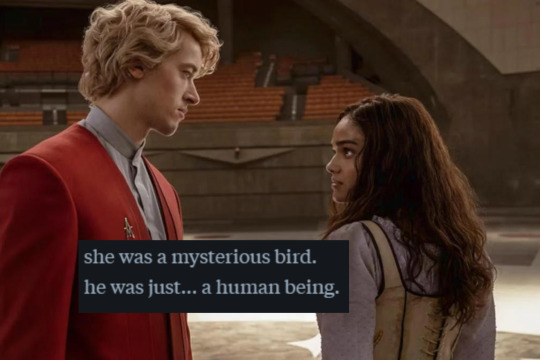

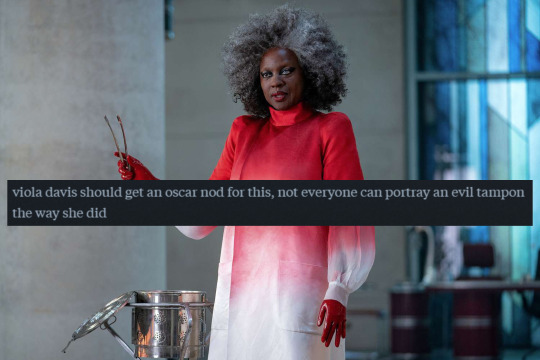

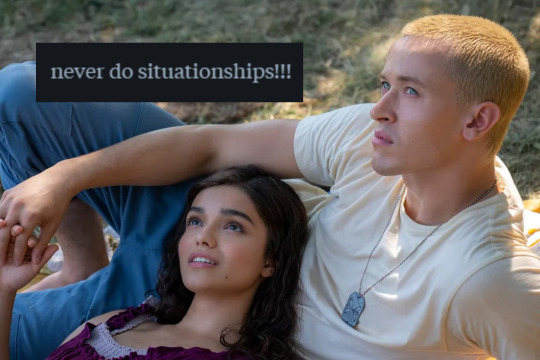

More BOSAS Reviews Pt 3 ⭐
#The Ballad of Songbirds and Snakes#TBOSAS#BOSAS#coriolanus snow#Lucy Gray Baird#volumnia gaul#Review#Funny#The Hunger Games#president snow#hunger games#thg#Funny Reviews#Reviews
4K notes
·
View notes
Text
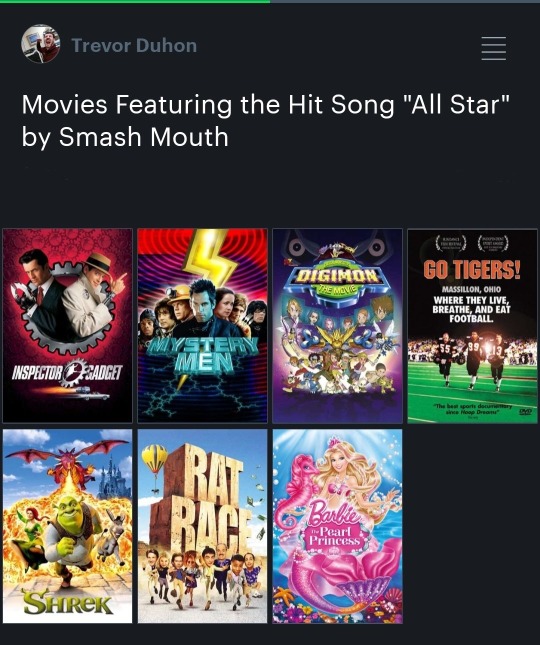
#letterboxd#movie#movie review#movie reviews#movies#movie recommendation#movie recommendations#review#reviews#steve harwell#smash mouth#all star#barbie the pearl princess#rat race#shrek#go tigers#digimon#digimon the movie#mystery men#inspector gadget
7K notes
·
View notes
Text
Pokémon Stadium Series
Nintendo 64 - Nintendo - 2000 to 2001
You as a Pokémon fan are absolutely fucking spoiled these days. Aside from the mainline games you have spinoffs and fangames offering different experiences, you have entire websites dedicated to documenting everything down to the internal maths of the series, there's no end to the free content you can access with an internet connection between emulators and battle sites like 'Showdown!', and it's now socially acceptable in most circles to be older than 13 and have something with Pikachu's face plastered on it (especially if you're female presenting, especially if your friend group is also infected with the Pokémon hype).
Back in my day™ you had almost none of this. You had the anime on Saturday mornings, you had the early run Pokémon licensed merch which WOULD get you called a baby if you continued buying past 10-12, and you had the games. Those sweet, sweet games that indoctrinated a generation of young people into being gamers and awoke a horde of JRPG addicts.

Literally Me
So remember this when I tell you that Pokémon Stadium, both one and two, aren't great games because they do something back then that you can't get today; they're great for what they did back then.
So Pokemon Stadium 1&2 were a duology of games from 2000 and 2001 respectively that allowed players to battle Pokemon in 3D, with the addition of some side content such as minigames included to prevent the game from being 100% Pokemon battles. Because otherwise, the game is in fact navigating a series of menus and completing Pokémon battles with 3D models.
Whether it's taking on the gym gauntlets, the marathon of battles in the Pokémon cups, or just free battles with friends and loved ones, 98% of the experience is either selecting Pokémon from a roster of pre-built 'rentals' or transferring them from a saved game using the Transfer Pak, then fighting them in a series of 3D environments. An experience which you can definitely do today using web apps but as I said earlier, we didn't have that.

The peak of Pokémon battles in 2000
So if you're buying Pokémon Stadium (either version really) you're already probably a Pokémon fan right? So that means you have Red/Blue/Yellow/Gold/Silver/Crystal, so why not just play that game and get the full experience? The fun of exploring, talking to NPCs, discovering new and exotic locations? Simple, because in those games battles looked like this

While in Stadium, battles looked like this

If you grew up watching the anime while playing the Gameboy games, there was this special kind of dissonance where you might find yourself saying "Yeah, (for the time) these graphics are RADICAL but I wish I had something closer to these cool Pokémon Battles they had in the anime." As you hide under the covers with your Gameboy Color worm light, nestled in your Ash Ketchum pajamas while you attempt for the 100th time to capture a ditto. Pokémon Stadium was the answer to this dissonance, providing you with vibrant 3D graphics unlike anything you'd ever seen before; bringing Pokémon to life in a way that would be unmatched until Colosseum came out during the Gamecube era.
So, to actual mechanics, you play both games pretty similarly; by building a team of Pokémon (either on your handheld or by using the rental mons the game provides) and take part in a series of battles to become the ultimate battle master. To use your own Pokémon, you'd need to use the aforementioned 'Transfer Pak' to plug in a copy of Red/Blue/Yellow (for 1) or Gold/Silver/Crystal (for 2) with a game saved to the cartridge; otherwise the rental Pokémon covered all released Pokémon (except for some hidden ones) allowing you to build your dream team, sans a few caveats here and there.

Evolved Pokémon have better stats but worse moves, while weaker Pokémon tend to have better moves to compensate
In terms of WHERE you can battle, there's two choices: Either in the Gym Leader Castle, or the Tournaments held in the center of the map on either game. Either way, the game will then have you battle through a series of 3v3 matches versus a set number of trainers who will also select 3 random mons from their full team of six.
A bit bare bones, but there's some spice to how things are run. For one, the rental system was a huge thing for us younger players back in the day. Even if you had the games some Pokémon were hard to catch, had evolution requirements some players couldn't complete (like the trade-mons), or were locked to a version you didn't have. The rental mons give you a list of every Pokémon (some exceptions, but not many) and then lets you build your dream team. Sure, you can't set their moves, EVs, IVs, and it's the era before abilities and natures but I CAN HAVE A MEOWTH/PERSIAN ON MY TEAM. Do you know what I had to do as a child to have this Pokémon outside of Stadium? I had to find someone in the American South who also enjoyed Pokémon, hoped they had Blue instead of Red, hoped they had a link cable, then get them to agree to a trade despite both of us being children (and therefore, objectively terrible) which likely meant giving away a rare Pokémon in exchange for what amounted to common garbage in their game because it was Version fucking Exclusivity™ and everyone seemed to know that meant you'd do anything to get that one fucking Pokémon you wanted.
In the handheld games, if you wanted to build your dream team then likely you'd have to put in some more effort than other games of the time would've required of you. With Stadium, your dreams come true, and if you already have that dream team you can just import them to fight in glorious 3D. Circumventing the fact that rental Pokémon are kinda terrible overall.

Don't feel like building? The challenge cup mode that gives you randomized team comps that has it's own charm (for masochists)
Not to say all of them were bad but construct a normal distribution of 'Good' to 'Bad' picks then that graph is gonna skew left so hard you'd be forgiven for thinking it was just a straight line. To keep every choice 'viable' Pokémon rentals were balanced around stats and moves. More powerful evolved Pokémon and Pokémon with high Base Stat Totals (BST) were given weaker moves and first form and low BST Pokémon were given generally better moves. Charizard might have better stats than Charmeleon and Charmander but his only fire type move is going to be something like Fire Spin. Conversely, Charmander might have Fire Blast but his stats are gonna make him an easy target for the computer's pokemon, which are not bound to the same builds as the rental mons you're using.
Once your team is assembled, then you're off to battle trainer after trainer after trainer with beautifully scored (for the Nintendo 64) soundtracks giving you an unearned sense of importance every step of the way. Battles themselves are conducted with a weird, but functional control layout where A and B access sub menus you then check with the R button before finalizing with the c-buttons, which on original hardware or a USB N64 controller is fine but on emulation with a more modern controller like Logitech, can be a little nerve wracking as you worry about whether your 'up' input on the control stick was up enough for the game or if you accidentally drifted right or left using an unintended move.

fun fact: the name of imported Pokémon affects their coloration in Stadium
Battles are also largely regulated by (at the time) tournament standard rules. Little and Pokecup have level restrictions, and all three non-random cups include clauses for sleep, held items, and repeat Pokémon. Additionally, in any cup if you win the round with all 3 Pokémon still in tact, you're granted a continue; meaning you can retry the battle if you lose. Additionally, there is no 'draw' outcome in these games. Use a move like Explosion or Selfdestruct and the game will register it as your loss on your final Pokémon, regardless of whether you took down the opposing fighter with you or not.
You'll be doing a LOT of back-to-back fights here against trainers with varied team comps, but even with over 246 Pokémon in the available potential lineup you'll get tired fast of fighting. This is, however, slightly mitigated by the 3v3 nature of the matches but even so be ready to here the same Pokémon noises, watch the same effects play out, and wait for the same health bars to tick down over and over as you claw your way to the spot of Pokémon Master.

The art style of non-battle scenes like the main map and minigame plaza have that nice, 90's charm to them as well.
If you do get tired of battling it out, then Stadium 1 and 2 both offer minigames for players to partake in. Either in a tournament format or by using the free-play browser, players are able to take part in a multitude of different Mario Party-esque (without the hand burning) minigames featuring the Pokémon as stars. Minigames consist of stick twirling, button mashing, and point collecting all while controlling fan favorite Pokémon such as Togepi, Eevee, Scyther, and Pichu with no real rhyme or reason behind why these game exist aside from a amusement park theming the minigame zones have for their icons and menus.
You won't get a real explanation as to why you're racing Donphans, cutting logs as Scythers and Pinsirs, or playing Simon Says with a bunch of Clefairy, but you don't really need that either. The games are fun, the models are charming, and watching Clefairy get smacked in the head for each wrong input brings me a level of joy I should probably talk about with my therapist. You won't likely spend hours in this mode, but it's a nice breather from the onslaught of battles otherwise.

fun fact: I still won't talk to some people because of the outcomes to Rampage Rollout over two decades ago. You know who you are.
Additionally there's a quiz minigame separate from the main selection of minigames with easy/normal/hard difficulty selections. Players compete to see who can be the first to get a number of questions correct before anyone else based on facts about the Pokémon (typing, size, silhouette, etc) or facts about the game (where you can find things in the game, names of routes and towns, names of figures in the game).
It's not the most challenging on easy or normal, but playing on hard the game will try to screw you with trick questions so playing with others becomes a balance of "do I let the question play out, or attempt to steal it before someone else can answer correctly?"

Sometimes even playing the game won't prepare you for how out of pocket the questions can get
The real advantage of 2 over 1 is that, in addition to minigames, the game has the trainer academy; a kind of in-depth battle tutorial to teach players not only the basics of Pokémon fighting, but also some secrets as well
You can learn about held items, a feature new to the second generation, as well as participate in mock battles to demonstrate the materials you've been reading and quizzed on. Some of this information for the time too was obscure or hidden knowledge, like the fact that using Defense Curl before using Rollout would boost the damage significantly or that using Stomp on an opponent who used minimize would double the damage.

Some type matchups just make sense, like Ground v Electric.
Overall though what really makes this game is the presentation. The soundtrack does a great job selling the feeling Nintendo wants you to experience, climbing the ladder in a tournament or the Gym Leaders Castle makes you feel powerful, and the little details on top of it all just tie it together in a nice package.
The fights, for example, are also narrated by "The Announcer". A bombastic voice shouting over every detail of a fight. When you score a crit, when you apply a status effect, even using certain moves will get the announcer loudly narrating each detail like a Pokémon prize fight. Seeing the ground rip apart when you use Earthquake is only half the charm, the other half comes from that man yelling in your ears "A DEVESTATING EARTHQUAKE ATTACK!". Clearing gyms or clearing opponents in one of the cups grants you gym badges, a dream for any child growing up on the handheld classics or watching the anime who wished they too could earn shiny bits of metal that gave them an inflated sense of importance.

I would literally kill everyone I came across if it'd get me a real life Zephyr Badge.
Stadium 1 and 2 aren't evergreen classics. They're stuck in Gens 1 and 2 respectively, the roster of Pokémon while impressive is largely useless and makes collecting trophies way harder than it has to be, and the games were made before things like abilities and double battles were introduced, leading to the Pokémon battling game missing out on the generation of Pokémon that made battling more fun (Revolution doesn't count, Revolution is dead to me and disappoints me more than I disappoint myself.)
But for the time especially, it gave fans an opportunity to experience a form of Pokémon more advanced than what the handhelds could output. It was a window into a world of potential that wouldn't be truly fulfilled until arguably the 3DS era of Pokémon released, and gave fans a fun little romp handcrafted for them at every twist and turn. Whether you were a gamer or you enjoyed the anime, there was something here for you.
Overall: 7/10
Sound: 8/10 (for the time)
Graphics: 9/10 (for the time)
Memorable Moments:
Stadium 1: Hearing about Mewtwo, thinking he was an urban legend, then finding out he wasn't
Stadium 2: Finally beating the elite 4 using only rental mons.
#wiptw#video games#gaming#pokemon#pokemon stadium#pokemon stadium 2#pkmn#review#7/10#Nintendo#nintendo 64#n64#retro#retro gaming
687 notes
·
View notes
Text
So, uh, Netflix Avatar, huh? Yeah. I guess I'll make a really long post about it because ATLA brainrot has is a cornerstone of my personality at this point.
So.
It's okay. B, maybe a C+.
That's it.
Now for the spoilers:
The biggest issue with the Netflix version is the pacing. Scenes come out of nowhere and many of the episodes are disjointed. Example: Aang escaping from Zuko's ship. We see him getting the key and going "aha!", and in the next scene he's in Zuko's room. And then he just runs out, no fun acrobatics or fights, and immediately they go to the Southern Air Temple where he sees Gyatso's corpse, goes into the Avatar state, and then sees Gyatso being really cheesy, comes out of it, and resolves that conflict. Nothing seems to lead into anything. The characters don't get to breathe.
The show's worst mistake (aside from Iroh fucking murdering Zhao) is its' first one: they start in the past. Instead of immediately introducing us to our main characters and dropping us into a world where we have a perfect dynamic where Aang doesn't know the current state of the world and Katara and Sokka don't know about the past, thus allowing for seamless and organic worldbuilding and exposition, they just... tell us. "Hey, this is what happened, ok, time for Aang!" There's no mystery, no intrigue, just a stream of information being shoved down the audience's throats and then onto the next set piece.
The visuals are for the most part great, but like with most Netflix productions, they just don't have great art direction. It feels like a video game cinematic, where everything is meant to be Maximum Cool - and none of the environments get to breathe. It's like they have tight indoor sets (with some great set design) and then they have a bunch of trailer shots. It's oozing with a kind of very superficial love.
Netflix still doesn't know how to do lighting, and with how disjointed the scenes are, the locations end up feeling like a parade of sets rather than actual cities or forests or temples. As for the costumes, Netflix still doesn't know how to do costumes that look like they're meant to be actually worn, so many of the characters seem weirdly uncomfortable, like they're afraid of creasing their pristine costumes.
The acting is decent to good, for the most part. I can't tell if the weaker moments come down to the actors or the direction and editing, but if I had to guess, I'd say the latter. Iroh and Katara are the weakest, Sokka is the most consistent, Zuko hits the mark most of the time, and Aang is okay. I liked Suki (though... she was weirdly horny? Like?) but Yue just fell kind of flat.
The tight fight choreography of the original is replaced with a bunch of spinny moves and Marvel fighting, though there are some moments of good choreography, like the Agni Kai between Ozai and Zuko (there's a million things I could say about how bad it was thematically, but this post is overly long already.) There's an actually hilarious moment in the first episode when Zuko is shooting down Aang, and he does jazz hands to charge up his attack.
Then there's the characters. Everybody feels very static - Zuko especially gets to have very little agency. A great example of that is the scene in which Iroh tells Lieutenant Jee the story of Zuko's scar.
In the original, it's a very intimate affair, and he doesn't lead the crew into any conclusions. Here, Iroh straight up tells the crew "you are the 41st, he saved your lives" and then the crew shows Zuko some love. A nice moment, but it feels unearned, when contrasted with the perfection of The Storm. In The Storm, Zuko's words and actions directly contradict each other, and Iroh's story gives the crew (and the audience) context as to why, which makes Zuko a compelling character. We get to piece it out along with them. Here - Iroh just flat out says it. He just says it, multiple times, to hammer in the point that hey, Zuko is Good Actually.
And then there's Iroh. You remember the kindly but powerful man who you can see gently nudging Zuko to his own conclusions? No, he's a pretty insecure dude who just tells Zuko that his daddy doesn't love him a lot and then he kills Zhao. Yeah. Iroh just plain kills Zhao dead. Why?
Iroh's characterization also makes Zuko come off as dumb - not just clueless and deluded, no, actually stupid. He constantly gets told that Iroh loves him and his dad doesn't, and he doesn't have any good answers for that, so he just... keeps on keeping on, I guess? This version of Zuko isn't conflicted and willfully ignorant like the OG, he's just... kind of stupid. He's not very compelling.
In the original, Zuko is well aware of Azula's status as the golden child. It motivates him - he twists it around to mean that he, through constant struggle, can become even stronger than her, than anyone. Here, Zhao tells him that "no, ur dad likes her better tee hee" and it's presented as some kind of a revelation. And then Iroh kills Zhao. I'm sorry I keep bringing that up, but it's just such an unforgiveable thematic fuckup that I have to. In the original, Zhao falls victim to his hubris, and Zuko gets to demonstrate his underlying compassion and nobility when he offers his hand to Zhao. Then we get some ambiguity in Zhao: does he refuse Zuko's hand because of his pride, or is it his final honorable action to not drag Zuko down with him? A mix of both? It's a great ending to his character. Here, he tries to backstab Zuko and then Iroh, who just sort of stood off to the side for five minutes, goes "oh well, it's murderin' time :)"
They mess with the worldbuilding in ways that didn't really need to be messed with. The Ice Moon "brings the spirit world and the mortal world closer together"? Give me a break. That's something you made up, as opposed to the millenia of cultural relevance that the Solstice has. That's bad, guys. You replaced something real with something you just hastily made up. There's a lot of that. We DID NOT need any backstory for Koh, for one. And Katara and Sokka certainly didn't need to be captured by Koh. I could go on and on, but again, this post is already way too long.
It's, um, very disappointing. A lot of telling and not very much showing, and I feel like all of the characters just... sort of end up in the same place they started out in. I feel like we don't see any of the characters grow: they're just told over and over again how they need to grow and what they need to do.
To sum it up: Netflix Avatar is a mile wide, but an inch deep.
#avatar the last airbender#atla#atla spoilers#avatar netflix#netflix avatar#atla live action#netflix atla#zuko#iroh#katara#aang#sokka#zhao#ozai#review
2K notes
·
View notes
Text
my review of serial experiments lain episode 1
hello everybody i just finished watching serial experiments lain episode 1 and wanted to write a review. okay i'm going to start with a plot synopsis so far:
plot synopsis:
the episode starts on a group of scientists all looking at each other in a circle. and one of them says "we have to do experiments on Lain.....in a series" and Lain happens to be passing by right at that moment.
and so another scientist is like "THERE SHE IS, FUCKING GET HER!!!" and they all start chasing after her and she starts running away. most of the episode is a chase sequence with the scientists trying to do the serial experiments and Lain.
at one point there are 2 workers carrying a big glass pane (or, implied to be, as it is totally see-through) and Lain runs right through it somehow but the scientists crash into it. i thought that was silly and liked it.
also at one point the scientists are all running together and they realize there's 1 more of them than there was before, and turns out it's Lain disguised in a labcoat and fake glasses/nose/mustache combo, and she goes "ehe" and does a big bead of sweat as her fake glasses/nose/mustache combo slips a bit. then she zooms away, leaving the labcoat and the fake glasses/nose/mustache combo hanging in the air.
finally, they catch her by throwing a brick at her head
review:
i can see why this is a well regarded series. the gags are good, and i'm left wondering who the scientists are and why they want to do serial experiments on Lain. And I'm also left wondering what the experiments will be and who Lain is. i'm wondering a lot of things and that is a sign of a good series.
i so far give it a 7/10 but will adjust the score based on how funny the experiments are
---
update:
the first experiment is they are making her run a ninja warrior style obstacle course. she has having trouble with the part where you gotta hang on to a swinging punching bag type thing, and keeps falling into the slime. i think i would do better on that part as i have greater upper body strength than a middle school girl
update 2:
they are seeing what the biggest animal is that Lain could beat in a fight
2K notes
·
View notes
Text
if i had a nickel for every time an aspiring swimmer who faced a career-ending injury fell in love with his neighbour, i would have two nickels. which isn’t alot but it’s weird that it’s happened twice
#lovely runner#kdrama#korean drama#kdrama review#review#tvn netflix#kdrama text post#kdrama recommendations#love next door#jung hae in#jung so min#byun woo seok
611 notes
·
View notes
Text
youtube
I got to make another review video!
#I'll post the art with a reblog give me a minute#review#video#youtube#tablet#drawing tablet#Frunsi RubensTab T11 Pro#Youtube
1K notes
·
View notes
Text
Longlegs has burrowed itself into my mind. It's a great movie. There's a lot of talk around it, of course, but what it does supremely well, at least for me, is depicting how trauma, especially childhood trauma, fucks with your memory, your understanding of the world, and your entire physiological response to everything. It's not "artsy," it's just well-crafted. It's not "scary," but it is unnerving and horribly close. Which is probably what was intended. Trauma has long legs.
821 notes
·
View notes
Note
bucky’s “gimme a minute, baby” in that skin-on-skin drabble has me in such a chokehold i’m actually struggling to breath right now and oops i just died. building on that, how do you think bucky kind of balances that control while also being the absolute man of service he is? hard to imagine him struggling for dominance—that man is NOT a sub—but he’s definitely walking a line between calling the shots and being on his fucking knees.
Bucky wants skin on skin…
I blame it on Bucky’s tunnel vision and tenacity. He can’t help but go after what he wants. He can’t help but lose his pride over it. Can’t help but have you…
The breath that rushes from him is ragged and desperate. Your fingers curl in his slightly sweat-matted tresses, tugging his face up so his glistening chin tilts upward and his glossy eyes meet yours from between your legs. He wants to speak, but he’s struggling for words. It seems strange to be able to bring him to this state - not submission, but utter desperation.
“What is it, Bucky?” you ask him and his eyes flutter when you rake your nails over his scalp.
“Baby,” he rasps.
“Hm?”
“Come on,” he sighs. “Let me just- Just…”
You smile at him and slightly shift your hips, his eyes drifting down to watch the movement and his throat bobbing as he swallows. This is torture for him and you can’t fathom someone wanting you so badly. You’re almost scared of what he will do to you when you allow him to lower his mouth back onto you.
In truth, you needed him to stop for a second. Your orgasm came toward you way too quickly. It was too much and your thighs had been shaking like crazy.
“What do you want, Bucky?” you ask him before your disbelief overrules the euphoric feeling you get when this man wants you like this.
His fingers curl in the sheets, the metal whirring with the movement. This is the kind of restraint you’ve seen from him in battle, when he wants to attack, but is waiting for orders. This is a soldier. A soldier waiting for the order to attack. To kill.
“Wanna lick you,” he mutters and his cheek falls to your inner thigh, pupils growing as his eyes dart between your glistening cunt and your flushed face. “Want to see you come.”
You shake your head and tilt it at him. “You weren’t trying to make me come.”
His mouth curves up at the corner. Bastard. He has his own agenda.
His brow drops as he straightens his position. His hands slowly curl from the sheets and slide to your thighs, squeezing the outside and sliding to your inner thighs.
Your confidence falters. And his smirk fully comes out when he knows you’ve caught on, his hands pressing down to open your thighs as far as they go.
“Let me have what I want, sweetheart,” he mumbles and presses lazy kisses over your thighs, visibly depriving himself of what he really wants - taunting himself. His voice is soft, but you know better than to think you have the power. You’re talking to a man starving.
Something in your belly twists at the thought and Bucky snickers at your pussy convulsing. His finger darts out and traces over your folds.
“Buck…”
“We want the same thing, don’t we?” he asks.
You nod, words lost.
“Good girl,” he says, lips fluttering against your clit with the words. You shudder. “You know I’d beg for it.”
Fuck, you do. He would. He has.
In defeat, you drop your head back between your shoulders with a long breath. You hear him laugh softly, feel his grip steady on your thighs.
Then you feel his mouth.
Oh no…
#i LOVE writing him like this#love my men like this#needy bucky#answered#writing#review#bucky barnes smut#bucky barnes x reader#bucky barnes x you#bucky barnes#drabble#drabbles
517 notes
·
View notes
Text
Disney's Wish
Look, Disney's Wish has been universally panned across the internet, and for good reason.
It’s just…kind of okay.
When we sit down to watch a Disney film—you know, from the company that dominated the animation industry from 1989 to (arguably) the mid 2010’s and defined the medium of animation for decades—we expect something magnificent. Now, I could sit here and tell you everything that I thought was wrong with Wish, but if you’re reading this review, then I imagine that you’ve already heard the most popular gripes from other users across the web. So, let me focus in:
The biggest problem with Wish—in fact, the only problem with Wish—is Magnifico.
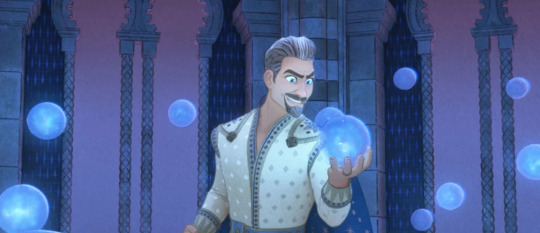
Whoa, that’s crazy! There’re so many things about Wish that could’ve been better! The original concept was stronger! The music was bad--
I hear you, I do. But stay with me here, okay? Take my hand. I studied under artists from the Disney renaissance. I teach an adapted model of Disney’s story pipeline at a University level. I spent a ridiculous amount of time getting degrees in this, and I am about to dissect this character and the narrative to a stupid degree.
First, we need to understand that a good story doesn’t start and end with what we see on the screen. Characters aren’t just fictional people; when used well, characters are tools the author uses (or in this case, the director) to convey their message to the audience. Each character’s struggle should in some way engage with the story’s message, and consequently, the story’s theme. Similarly, when we look at our protagonist and our antagonist, we should see their characters and their journeys reflected in one-another.
So, what went wrong between Asha & Magnifico in terms of narrative structure?
Act I
In Wish, we’re introduced to our hero not long into the runtime—Asha. She’s ambitious, caring, and community-oriented; in fact, Asha is truly introduced to the audience through her love of Rosas (in “Welcome to Rosas”). She’s surrounded by a colorful cast of friends who act as servants in the palace, furthering her connection with the idea of community but also telling us that she’s not of status, and then she makes her way to meet Magnifico for her chance to become his next apprentice.
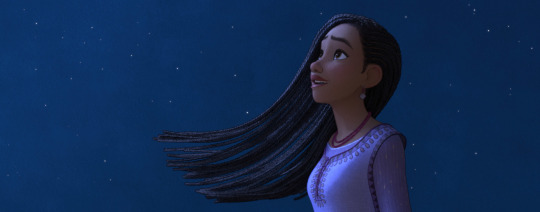
Quick aside: I'm not going to harp on Asha as a character in the context of Disney's overall canon. Almost every review I've seen covers her as a new addition to Disney's ever-growing repertoire of "Cute Quirky Heroines", and I think to be fair to Asha as an actor in the narrative, it serves her best to be weighed within the context of the story she's part of.
As Asha heads upstairs for her interview, we're introduced to the man of the hour: Magnifico. He lives in a tower high above the population of Rosas, immediately showing us how he differs from Asha; he’s disconnected from his community. He lives above them. He has status. While the broader context of the narrative wants us to believe that this also represents a sense of superiority, I would argue that isn’t what Magnifico’s introduction conveys; he's isolated.
Despite this distance, he does connect with Asha in “At All Costs”. For a moment, their goals and values align. In fact, they align so well that Magnifico sees Asha as someone who cares as much about Rosas as he does, and almost offers her the position.
… Until she asks him to grant Saba’s wish.
This is framed by the narrative as a misstep. The resonance between their ideals snaps immediately, and Magnifico says something along the line of “Wow. Most people wait at least a year before asking for something.”
This disappointment isn't played as coming from a place of power or superiority. He was excited by the idea of working with someone who had the same values as he did, who viewed Rosas in the same way he does, and then learns that Asha’s motivations at least partially stem from a place of personal gain.
Well, wait, is that really Asha's goal?
While it's not wholistically her goal, it's very explicitly stated & implied that getting Saba's wish granted is at least a part of it. The audience learns (through Asha's conversation with her friends before the interview) that every apprentice Magnifico has ever had gets not only their wish granted, but the wishes of their family, too! Asha doesn’t deny that this is a perk that she’s interested in, and I don't think this is a bad thing.
So, Is Asha’s commitment to Saba selfless, or selfish? I’m sure the director wanted it to seem selfless, wherein she believes her family member has waited long enough and deserves his wish granted, but we can’t ignore the broader context of Asha essentially trying to… skip the line.

Then, we get our first point of tension. Magnifico reveals his “true colors” in snapping at Asha, telling her that he “decides what people deserve”. This is supposed to be the great motivator, it’s meant to incite anger in the audience—after all, no one gets to decide what you deserve, right? But unfortunately for the integrity of the film and the audience's suspension of disbelief, at least part of Magnifico’s argument is a little too sound to ignore:
Some wishes are too vague and dangerous to grant. Now, there’s visual irony here; he says this after looking at a 100 old man playing the lute. The idea that something so innocuous could be dangerous is absurd, and the audience is meant to agree.
... But we’ve also seen plenty of other wishes that might be chaotic—flying on a rocket to space, anyone? The use of the word vague is important, too—this implies wording matters, and that a wish can be misinterpreted or evolve into something that is dangerous even if the original intent was innocuous. His reasoning for people forgetting their wish (protecting them from the sadness of being unable to attain their dreams) is much weaker, but still justifiable (in the way an antagonist’s flawed views can be justified). The film even introduces a facet of Magnifico’s backstory that implies he has personal experience with the grief of losing a dream (in the destruction of his home), but that thread is never touched on again.
What is the audience supposed to take from this encounter? If we’re looking at the director’s intent, I’d argue that we’ve been introduced to a well-meaning young girl and a king who’s locked away everyone’s greatest aspiration because he believes he deserves to have the power to decide who gets to be happy.
But what are we shown? Our heroine, backed by her friends, strives to be Magnifico’s apprentice because she loves the city but also would really like to see her family's wishes granted. When this request is denied and she loses the opportunity to be his apprentice, she deems Magnifico’s judgement unfair & thus begins her journey to free the dreams of Rosas’ people.
In fairness, Magnifico doesn’t exhibit sound judgement or kindness through this act of the film. He’s shown to be fickle, and once his composure cracks, he can be vindictive and sharp. He's not a good guy, but I'd argue he's not outright evil. He's just got the makings of a good villain, and those spikes of volatility do give us a foundation to work off of as he spirals, but as we’ll discuss in a bit, the foreshadowing established here isn’t used to the ends it implies.
While I was watching this film, I was sure Magnifico was going to be a redeemable villain. He can’t connect with people because he's sure they value what he provides more than they value him (as seen in “At All Costs” and the aftermath), and Asha’s asking for more was going to be framed as a mistake. His flaw was keeping his people too safe and never giving them the chance to sink or swim, and he's too far removed from his citizens to see that he is appreciated. Asha does identify this, and the culmination of her journey is giving people the right to choose their path, but the way Magnifico becomes the “true” villain and his motivations for doing so are strangely divorced from what we’re shown in Act I.
Act II:
His song, “This is the Thanks I Get!?” furthers the idea that Magnifico’s ire—and tipping point—is the fact that he thinks the people he’s built a kingdom for still want more. Over the course of this 3:14 song, we suddenly learn that Magnifico sends other people to help his community and doesn’t personally get involved (we never see this outside of this song), and that he’s incredibly vain/narcissistic (he's definitely a narcissist). I think feeling under-appreciated is actually a very strong motivation for Magnifico as a character-turning-villain, and it works very well. It’s justified based on what we’ve seen on screen so far: he feels under-appreciated (even though he’s decidedly not—the town adores him), he snaps and acts irrationally under stress (as seen with his outburst with Asha), and he’s frustrated that people seem to want more from him (again, as seen with his conversation with Asha in Act I).
But then… he opens the book.
Ah, the book. As an object on screen, we know that it's filled with ancient and evil magic, well-known to be cursed by every relevant character in the film, and kept well-secured under lock and key. But what does it stand for in the context of the narrative's structure? A quick path to power? We're never told that it has any redeeming qualities; Magnifico himself doesn't seem to know what he's looking for when he opens it. It feels... convenient.
I think it's also worth noting that he only turns to the book when he's alone; once again, the idea of connection and community rears it's ugly head! Earlier in the film, Amaya-- his wife-- is present and turns him away from taking that path. In her absence, he makes the wrong choice.
This decision could make sense; it contains powerful magic, and if it were framed in such a way that the people of Rosas were losing faith in Magnifico’s magic, as if what he can do might not be enough anymore after what they felt from Star, going for the book that we know contains spells that go above and beyond what he can already do would be logical. Along the lines of, “If they’re not happy with what I do for them, fine. I, ever the “martyr”, will do the unthinkable for you, because you want more.”

It would keeps with the idea that Magnifico believes he's still trying to help people, but his motivation has taken his self-imposed pity party and turned it into resentment and spite.
But, that’s not the case. Instead he talks about reversing that “light”, which has had no real negative or tangible consequences on Rosas. Everyone had a warm feeling for a few seconds. Again, it’s meant to paint him as a vain control freak, but… he hasn’t lost any power. The citizens of Rosas even assume the great showing of magic was Magnifico.
Act III
Then, we get to the consequences of opening the book (and perhaps my biggest qualm with this film). The book is established as being cursed. Magnifico knows it, Asha knows it, and Amaya—who is introduced as loyal-- knows it. The characters understand his behavior is a direct result of the book, and search for a way to save him. This is only the focus of the film for a few seconds, but if you think about it, the fact that his own wife cannot find a way to free him of the curse he’s been put under is unbelievably tragic. Worse still, upon discovering there is no way to reverse the curse, Magnifico—the king who built the city & “protected it” in his own flawed way for what seems to be centuries—is thrown out by his wife. You know, the wife who's stood loyal at his side for years?
It’s played for laughs, but there’s something unsettling about a character who’s clearly and explicitly under the influence of a malevolent entity being left… unsaved. If you follow the idea of Magnifico being disconnected from community being a driving force behind his arc, the end of the film sees him in a worse situation he was in at the start: truly, fully alone.
They bring in so many opportunities for Magnifico to be sympathetic and act as a foil for Asha; he’s jaded, she’s not. He’s overly cautious (even paranoid), she’s a risk-taker. He turns to power/magic at his lowest point, Asha turns to her friends at her lowest point. Because this dichotomy isn’t present, and Magnifico—who should be redeemable—isn’t, the film is so much weaker than it could’ve been. The lack of a strong core dynamic between the protagonist and antagonist echoes through every facet of the film from the music to the characterization to the pacing, and I believe if Magnifico had been more consistent, the film would’ve greatly improved across the board.
I mean, come on! Imagine if at the end of the film, Asha—who, if you remember, did resonate with Magnifico’s values at the start of the film—recognizes that he's twisted his original ideals and urges him to see the value in the people he’s helped, in their ingenuity, in their gratitude, & that what he was able to do before was enough. Going further, asking what his wish is or was—likely something he’s never been asked— and showing empathy! We’d come full circle to the start of the film where Asha asks him to grant her wish.
Pushing that further, if Magnifico’s wish is to see Rosas flourish or to be a good/beloved king, he'd have the the opportunity to see the value in failing and how pursuing the dream is its own complex and valuable journey, and how not even he is perfect.
The curse and the book (which, for the purposes of this adjustment, would need to be established as representing the idea of stepping on others to further your own goals/the fast way to success), then serve as the final antagonist, that same curse taking root in the people of Rosas who’ve had their dreams destroyed, and Asha works with the community to quell it. Asha’s learned her lesson, so has Magnifico, and the true source of evil in the film—the book—is handled independently. Magnifico steps back from his role as King, Amaya still ends up as Queen, and Asha takes her place as the new wish-granter.
This route could even give us the true “Disney villain” everyone’s craving; giving the book sentience and having it lure Magnifico in during “This is the Thanks I Get!?” leaves it as its own chaotic evil entity.
All in all, Magnifico's introduction paved a road to redemption that the rest of the film aggressively refused to deliver on, instead doubling down on weaker motivations that seem to appear out of thin air. Once the audience thinks, hey, that bad guy might have a point, the protagonist has to do a little more heavy lifting to convince us they're wrong.
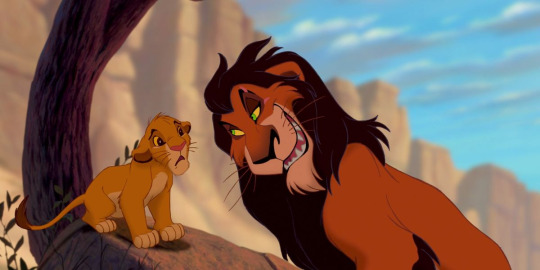
Look at the big-bad-greats from Disney's library. There isn't a point in the Lion King where we pause and think, "Wait a second, maybe Scar should be the guy who rules the Pridelands." Ursula from the Little Mermaid, though motivated by her banishment from King Triton's Seas, never seems to be the right gal for the throne. Maybe Maleficent doesn't get invited to the princess's birthday party, but we don't watch her curse a baby and think, Yeah, go curse that baby, that's a reasonable response to getting left out.
What do they all have in common? Their motivation is simple, their goal is clear, and they don't care who they hurt in pursuit of what they want.
Magnifico simply doesn't fall into that category. He's motivated by the idea of losing power, which is never a clear or impactful threat. His goal at the start seems to be to protect Rosas, then it turns into protecting his own power, and then-- once he's corrupted-- he wants to capture Star. The problem is, there's no objective to put this power toward. Power for power's sake is useless. Scar craves power because he feels robbed of status. Ursula believes the throne is rightfully hers. Maleficent wanted to make a statement. Magnifico... well, I'm not really sure.
1K notes
·
View notes
Text
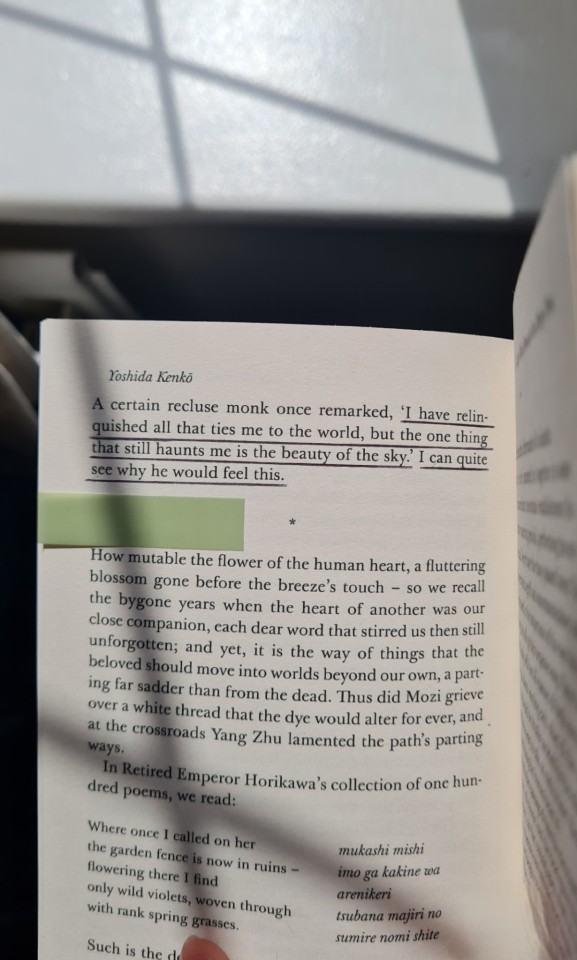

first read of may — a cup of sake beneath the cherry trees by yoshida kenkō
moonlight, sake, spring blossom, idle moments, a woman's hair. 'a cup of sake beneath the cherry trees' is a collection of fragments from the journal of a 13th-century monk, as he reflects on the pleasures of life and its passing moments. i think there's something in here for everyone to admire, with its reflective themes, philosophical undertones, and beautiful writing and imagery.
i definitely recommend!! 🌱
#3.5 stars#classics#book review#review#literature aesthetics#books#book#bookish#bookblr#bookworm#bookstagram#dark academia#booklover#books and libraries#reading log#a cup of sake beneath the cherry trees#yoshida kenko#studyblr#study space#study tips#quotes#annotated bibliography#book log
633 notes
·
View notes